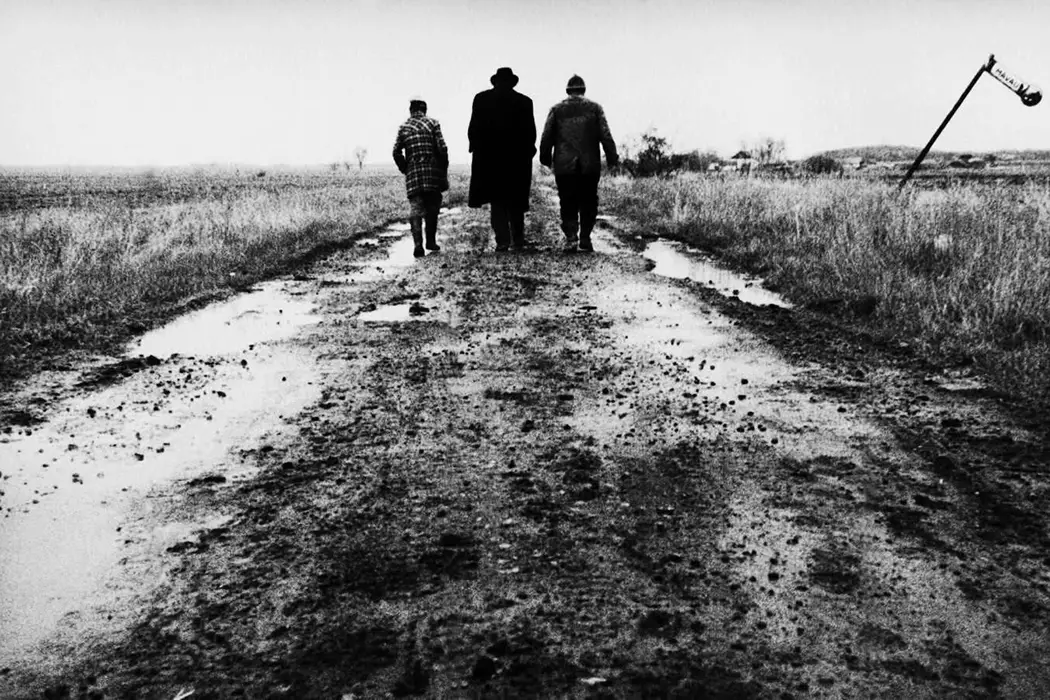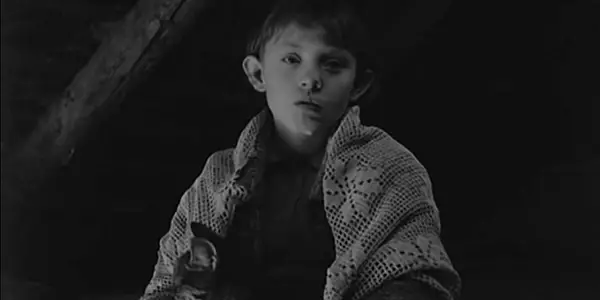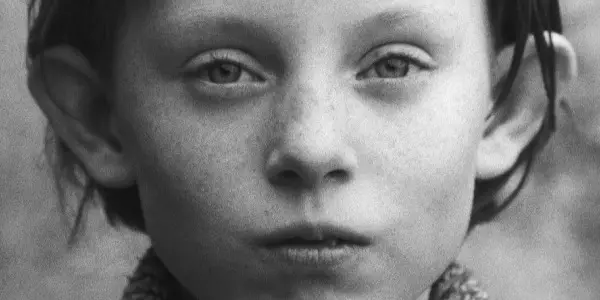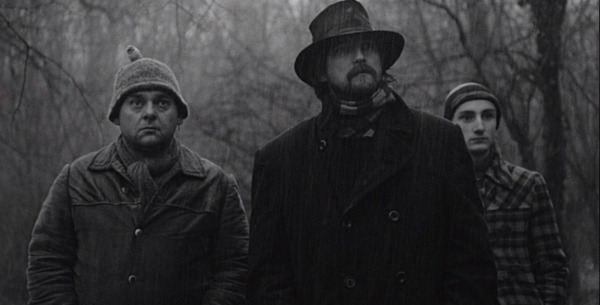SÁTÁNTANGÓ: State Of Decay

(he/him; bisexual) I'm a 21 years old guy with depression…
I came to the conclusion that I like watching paint dry because not only did I watch Béla Tarr’s Sátántangó three times in less than a month, I want more. It’s a difficult movie to go through at home when there are so many distractions around, especially in one sitting, but if you let this massive dinosaur swallow you it will take you to the inexpressible and vague world of Béla Tarr.
His ability to show life itself without being pushy or pretentious may sound strange, considering that Tarr’s movies are the perfect example of depressing European movies, with >10 minute static shots where nothing happens, that people in popular movies and TV shows like to mock when European movies are mentioned.
And honestly? I can’t blame them. Even when I was already into movies, I hated The Turin Horse and Sátántangó at first; his vision is entirely one of a kind, it’s deeply pessimistic and depressing in a way only Béla Tarr can make you feel. And sometimes when I watch a movie that is so different and unique, it’s repelling for me until I find strength in myself to rewatch it, and in 90% of cases I will fall in love with this movie and call it “a masterpiece.” That is exactly what happened between me and Sátántangó.
Humanism of Béla Tarr
Sátántangó is a manifest of humanism but the one that sees humanity as a disease that eats itself from the inside, can’t learn any lesson, and will lead itself and the world around it into an inevitable oblivion. But still, this masterclass of filmmaking is humanistic; it doesn’t seem that Tarr sees the rescue for humankind, and with this movie he cries for help so that maybe someone would find it. I can’t even call his work nihilistic, no matter how dark the world is you always can see Tarr’s deep respect for his characters and people in the real world.
Labels that are associated with his work such as “nihilistic” and “anti-human” are deeply misleading and wrong. All Béla Tarr does is mourns human beings’ love for exploiting and trying to subdue the gifts of nature we’ve been given, his bleak worldview arises from his deep love for both humanity and nature and the closeness between them.

And not only closeness but similarities also: in the opening shot we see a group of cattle as they wander around, with some instinctively having sex with each other, and slowly the herd move out of the farm towards the horizon. If you have seen The Turin Horse you know for sure what Béla Tarr implies right here, but even if you haven’t, the scene is blunt enough to catch the subtext.
Just like in The Turin Horse, he suggests a human being equals an animal. But in Sátántangó it seems he went a little further and put an animal above a human, for in the opening scene every single cow is free to go wherever it likes to go and even leave the farm. They have the freedom that none of the characters in the movie have; he sees human beings as blunt, desperate and mercantile tools, they don’t live but simply exist.
Life Dressed Like a Fever Dream
Every time I think about Sátántangó it feels like a fever dream from which you wake up with a pounding heart and in cold sweat, and yet the movie seems way too real to be fiction. Every face, every word, every glimpse and wind blow feel like they’ve come straight from a nightmare that never ends. But the thing is it is not a nightmare, it’s real life and that’s why people in it are so real, almost native just like their anger and frustration. Desperate and enraged, lost and anguished, they’re bound to suffer in sublime yet stifled and corrupted shapes of this world until death comes for them.

The movie takes place in Hungary just after USSR ceased to exist, and as someone who was born and still lives in a post-Soviet country after almost 30 years since the death of so-called communism, I still can totally see how every one of the told stories in Sátántangó could have happened. When I come out of my house or even look in the mirror I always see the same lifeless and beat-up by insignificant existence faces like they have never seen the Sun. It always feels like it’s rainy and gloomy no matter how hot and sunny it is. Broken paws, collateral damage in the theater of big and important people. Not just a boulevard but whole countries of broken dreams and lives.
Greatness in Simplicity
There’s simply no other movie with the magnitude, bewilderment and moderation of Sátántangó, but the movie isn’t pretentious in the slightest. Mr. Tarr just captured life as it is, not every documentary filmmaker can brag about such realness in their movies. And the other interesting thing is that there’s no real characters in the movie: no matter how much time we spend looking at the close-up of their faces they’re no different from the landscapes which we also observe for quite a long time. It’s almost as if Tarr or maybe human nature itself ultimately annihilates characters as such.

The story and characters in the movie are very simple, maybe even a bit primitive as you can understand, but I prefer to think that it was Tarr’s intention: to show and say as little as possible but make you fully understand what he shows and says, to get us to the bottom of it all. I swear to god, Tarr movies have some of the most effective camerawork.
He makes you appreciate every character and landscape, he gives more than enough time to see and feel every little wrinkle on a face and every bug on a tree, he transmits the devastation to us, the audience, and does that insanely well. Although, combine that and the runtime and you’re risking to make a lot of people in the audience mad, but the risk is what the art is about, right? It’s rare for a movie that plays itself very safe to become a classic – nearly every classic movie was a gambler at some point, and Sátántangó is definitely one of them.
Sátántangó: Conclusion
Sátántangó is enigmatic and yet simple, with moments of unconditional solitude and hopelessness, long like prayers monologues with which Béla Tarr hypnotizes you for these 7 and a half hours like a snake charmer. It’s one of the most monumental and massive movies ever made, if not the most, and the amount of time I’ve spent rewatching the movie and writing this piece just proves my point.
Tarr denies any form of traditional beauty and makes you contemplate the ugliness of the world, but still manages to find some kind of beauty in it. It makes you appreciate and feel the nihilism of Tarr’s magnum opus even more, and I can only imagine what’s it like to witness this colossal declaration of greatness on the big screen. But even on your TV or the monitor of your computer, it’s more than enough to fully recognize the vastness of this ambitious and underappreciated experiment.
What do you think about Sátántangó and could you watch it just in one sitting?
Does content like this matter to you?
Become a Member and support film journalism. Unlock access to all of Film Inquiry`s great articles. Join a community of like-minded readers who are passionate about cinema - get access to our private members Network, give back to independent filmmakers, and more.
(he/him; bisexual) I'm a 21 years old guy with depression and social anxiety who found his voice in cinema and writing. I love writing, I don't consider myself as a good writer but as long it helps me to socialize and people like it I will continue to do so. I don't state that my opinion is the only righteous one, I can be biased and naggy but I always open to susprises and give EVERY movie I watch a chance.













